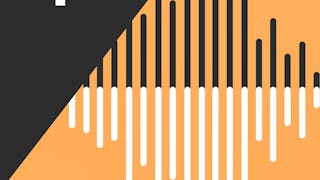This introductory course is for SAS software users who perform statistical analyses using SAS/STAT software. The focus is on t tests, ANOVA, and linear regression, and includes a brief introduction to logistic regression.
通过 Coursera Plus 解锁访问 10,000 多门课程。开始 7 天免费试用。


了解顶级公司的员工如何掌握热门技能

该课程共有8个模块
In this module you learn about the course and the data you analyze in this course. Then you set up the data you need to do the practices in the course.
涵盖的内容
2个视频5篇阅读材料
In this module you learn about the models required to analyze different types of data and the difference between explanatory vs predictive modeling. Then you review fundamental statistical concepts, such as the sampling distribution of a mean, hypothesis testing, p-values, and confidence intervals. After reviewing these concepts, you apply one-sample and two-sample t tests to data to confirm or reject preconceived hypotheses.
涵盖的内容
17个视频2篇阅读材料9个作业
In this module you learn to use graphical tools that can help determine which predictors are likely or unlikely to be useful. Then you learn to augment these graphical explorations with correlation analyses that describe linear relationships between potential predictors and our response variable. After you determine potential predictors, tools like ANOVA and regression help you assess the quality of the relationship between the response and predictors.
涵盖的内容
29个视频2篇阅读材料14个作业
In this module you expand the one-way ANOVA model to a two-factor analysis of variance and then extend simple linear regression to multiple regression with two predictors. After you understand the concepts of two-way ANOVA and multiple linear regression with two predictors, you'll have the skills to fit and interpret models with many variables.
涵盖的内容
13个视频1篇阅读材料5个作业
In this module you explore several tools for model selection. These tools help limit the number of candidate models so that you can choose an appropriate model that's based on your expertise and research priorities.
涵盖的内容
11个视频3篇阅读材料4个作业
In this module you learn to verify the assumptions of the model and diagnose problems that you encounter in linear regression. You learn to examine residuals, identify outliers that are numerically distant from the bulk of the data, and identify influential observations that unduly affect the regression model. Finally, you learn to diagnose collinearity to avoid inflated standard errors and parameter instability in the model.
涵盖的内容
18个视频7个作业
In this module you learn how to transition from inferential statistics to predictive modeling. Instead of using p-values, you learn about assessing models using honest assessment. After you choose the best performing model, you learn about ways to deploy the model to predict new data.
涵盖的内容
11个视频1篇阅读材料4个作业
In this module you look for associations between predictors and a binary response using hypothesis tests. Then you build a logistic regression model and learn about how to characterize the relationship between the response and predictors. Finally, you learn how to use logistic regression to build a model, or classifier, to predict unknown cases.
涵盖的内容
25个视频18个作业
位教师

提供方
从 Data Analysis 浏览更多内容
人们为什么选择 Coursera 来帮助自己实现职业发展




学生评论
299 条评论
- 5 stars
82.94%
- 4 stars
12.37%
- 3 stars
2.34%
- 2 stars
0.66%
- 1 star
1.67%
显示 3/299 个
已于 Sep 4, 2019审阅
The best course for statistics I've ever seen. I've learned statistics here not in university. Big like to all those people provide this valuable course for us. Thanks a million.
已于 Oct 28, 2019审阅
best course to learn n rewind concepts. helped me at lot for my placement preparations
已于 May 22, 2020审阅
A Guided lesson even for a beginner. It gives you a general overview of statistics with great emphasis on SAS programming and statistical interpretations of your analyses.
常见问题
To access the course materials, assignments and to earn a Certificate, you will need to purchase the Certificate experience when you enroll in a course. You can try a Free Trial instead, or apply for Financial Aid. The course may offer 'Full Course, No Certificate' instead. This option lets you see all course materials, submit required assessments, and get a final grade. This also means that you will not be able to purchase a Certificate experience.
When you purchase a Certificate you get access to all course materials, including graded assignments. Upon completing the course, your electronic Certificate will be added to your Accomplishments page - from there, you can print your Certificate or add it to your LinkedIn profile.
Yes. In select learning programs, you can apply for financial aid or a scholarship if you can’t afford the enrollment fee. If fin aid or scholarship is available for your learning program selection, you’ll find a link to apply on the description page.
更多问题
提供助学金,








